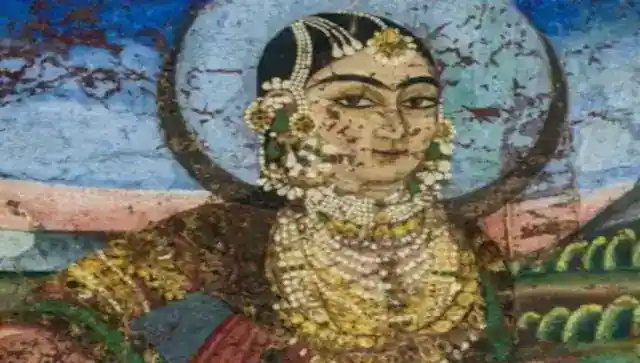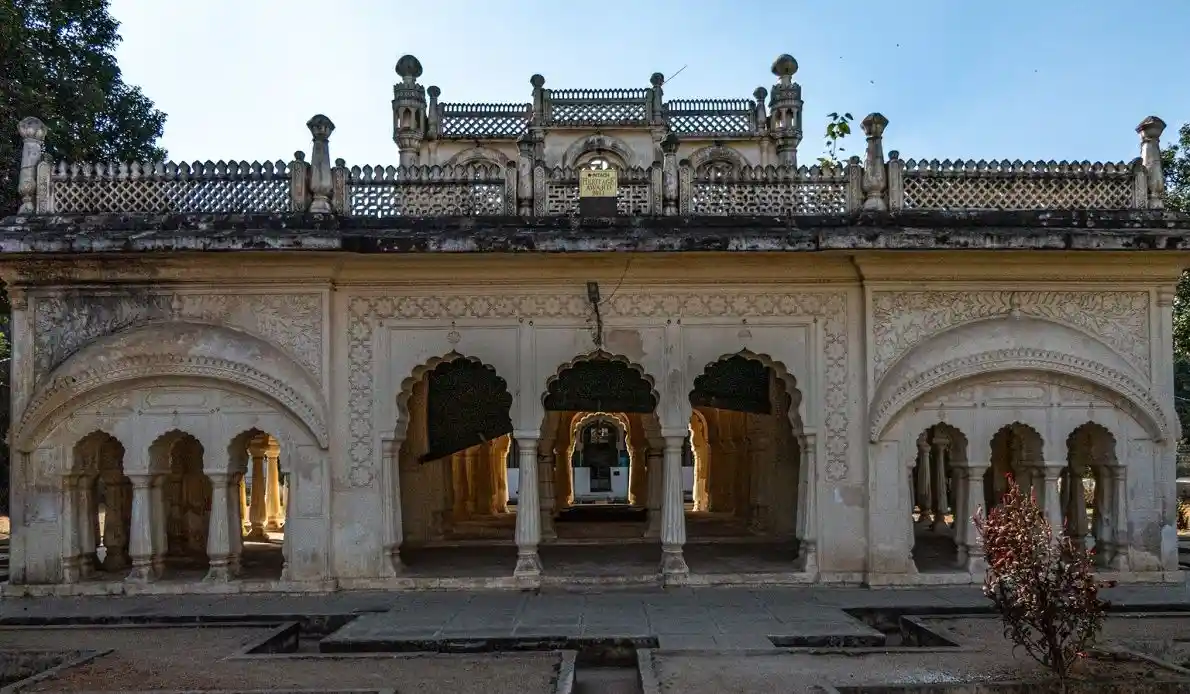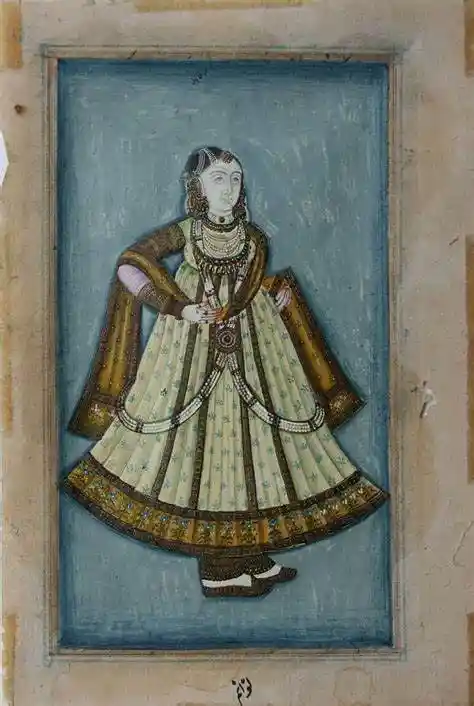Mah Laqa Bai – An extraordinary woman of the 18th century
Forgotten in history and lost to people, today, we narrate the tale of Mah Laqa Bai, one of the first and the finest female Urdu poets to have a diwan of ghazals (anthology of poems) under her name, and also one of the few women of her time who acquired the ranks of a noble in a royal court. Who was this exceptional personality? Let’s find out.

An anonymous portrait of Mah Laqa Bai; Image Source: First Post
The geographical focus of our story this time is the Deccan region, specifically the present-day Hyderabad which was then a princely state. The time frame is the 18th century, a period which witnessed many fascinating events, but unfortunately, we only remember it as a time when the British Raj was beginning to rule over the subcontinent.
Now, we have read enough tales to know that the life of women during the 18th century was very different from that of the present. Except for a few women born into royalty, local women of the time had little access to the high-profile society that was dominated by men. But what if I told you that there was a woman, a woman of modest origins, who with her sheer talent and wit acquired privileges that even royal ladies had trouble getting their hands on?
Indeed, such was the life of Chanda Bibi who later acquired the honorary name of Mah Laqa Bai. The journey of Chanda Bibi to Mah Laqa Bai is both inspiring and also somewhat unimaginable, given the socio economic and political climate of the time.
Chanda Bibi was born to Raj Kunwar Bai, a tawaif (the name given to dancers of the medieval period), who originally hailed from Ahmedabad. Raj Kunwar Bai became a dancer and a singer when she fell in company with a storyteller group during her journey to Aurangabad, which was then the capital of the Nizam. She later married a nobleman and gave birth to Chanda Bibi.
Chanda Bibi was unusual in all aspects. She was keen on learning and was highly ambitious, even at a young age. She acquired formal education, which again was rare for women in those days.
She was determined to excel in music and poetry and as a result was accepted as the pupil of Kushal Khan Kalawant, the grandson of the renowned musician Tansen, one of the navratnas (nine-jewels) in Akbar’s court. Her poetry bears testimony of her writing skills and also her devotional spirit. No woman of her time had mastered the Urdu language or wrote poems in Urdu. But Chanda Bibi was no ordinary woman.
In 1798, Chanda Bibi published a divan of ghazals (anthology of poems) under her name, creating history then and there.
It is revealed that the anthology was presented to Sir John Malcolm who was then in charge of British administration in the Deccan.
It is from her poetry we find that Chanda Bibi was highly influenced by Sufism. Much like other Sufi poets, her poems talked about love, devotion and spirituality. But unlike most poems, hers came with a feminine touch and her style of expression set her apart from others. Her skill and popularity was such that she eventually became a regular, and the only female participant in poetry gatherings in her region.
Her poems also talked immensely about state politics, which further makes it apparent that Chanda Bibi was equally interested in the political matters of her time. One cannot say when but we understand why Chanda Bibi eventually became acquainted with the nobility of the Nizam’s court. She was one of the few women who acquired the status of an ‘omrah’(noble) and received a jagir (land given to nobles by rulers) with revenue collecting rights. She also accompanied the Nizam on hunting trips, which is evident from a painting by Rai Venkatachalam. The court of Nizam was awed both by her beauty as well as her skills in multiple fields like poetry, politics and even horse riding and archery!
It is sad to think that such an extraordinary personality who contributed so much to arts and architecture, remains unacknowledged. Some argue that it may have been a consequence of gender bias, which led to her neglect after her death while others say that her dancer background diluted her reputation. Yet others, like William Darlymple argue that the overall decline of Urdu poetry in present times may have been a reason why Mah Laqa Bai’s achievements are lost to the popular imagination.
But we as lovers of history must not forget her. We remember her as the woman of many talents, a woman who rose to her ranks because of her skills and we celebrate her contribution to Urdu poetry.
The Nizam honoured her with the name Mah Laqa Bai, meaning moon-cheeks because of her luminous impact in the court. In this way, Chanda Bibi became Mah Laqa Bai, a name that became her identity for eternity.
Scott Kugle, the professor of middle eastern and south Asian studies at Emory University, who authored the book, ‘When Sun meets Moon’ also dedicated section to Chanda Bibi. Talking about the extent of her influence in the Nizam’s court, he wrote,
“She was given a bodyguard of 100 soldiers and other rights which were keenly sought after during the time—to be carried around in a palanquin and have her way cleared by the beating of Kettle –Drums. For a courtesan to be able to exercise such powers was unthinkable and placed her in a unique position. “
Historian William Dalrymple was equally fascinated by Chanda Bibi and her ambitious spirit. He writes,
“Most high class courtesans of that age would have been happy with their own kothi, but Mah Laqa Bai was both ambitious and extraordinary. She even became an advisor at court!”
With her influence and wealth, Chanda Bibi opened a center of learning and provided training to 300 women in performing arts. She was also a major patron of many arts and educational projects. She commissioned a library that contained books on science and art. She also motivated artists and poets by sponsoring them. Infact, the Mahanama, a book on the history of Deccan, was also said to have been commissioned by Chanda Bibi.
Chanda Bibi or Mah Laqa Bai’s legacy lives in her writings and the buildings she commissioned during her time. To revisit her life, one simply needs to go to the Maula Ali Dargah in Hyderabad, a sacred place dedicated to Ali, the founder of the Shia sect. In her biography, Chanda Bibi talks about an incident right before her birth. Her mother had gone to the Maula Ali Dargah, which was located on a hilltop. Out of fatigue, she fainted outside the shrine, but she prayed to the saint to save her unborn child. Hence, Chanda Bibi remained ever grateful to Maula Ali and was later buried close to the dargah after she passed away in 1824. The tomb of Mah Laqa Bai however, remains neglected and would have been demolished if Scott Kugle hadn’t pointed out the historical significance of the site.

The tomb of Mah Laqa Bai, in Hyderabad; Image Source: Imagewrighters

Mah Laqa Bai, performing in the court of Raja Rao Rambha Bahadur; Image Source: Muslimworldtoday

Mah Laqa Bai- the 18th-century woman with many skills; Image Source: The Quint


